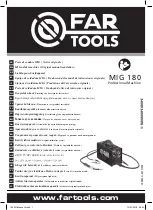
TST-019 MRTALPCH CHANNEL
– Rev. 2016-310
Page 21 of 20
ADDITIONAL INFORMATION
NOTES:
1) When requesting information on a particular lifter, please have the model number and
serial number available, in order for us to properly identify components.
2)
CAUTION:
Always proceed with caution when opening enclosures containing electrical
wiring. Wiring is often connected to components in the cover, as well as the enclosure
itself.
3) In some cases a leak may be identified to be in an assembly (such as a filter or valve
assembly) but the actual cause is not apparent (neither the filter nor the valve itself are
the cause). In these cases, the leak may be caused by a cracked fitting. Cracks in fittings
may be visible but are often virtually impossible to locate except under factory test
conditions. They may appear as dark lines along the seam of female fittings, along the
hex nut section of female hose nipples, or at the base of the threads on male fittings. If a
leak is traced to an assembly and the cause is not visibly apparent, it may be best to
simply replace the whole assembly rather than a single component.
4) If any metal fittings are disassembled during testing,
always
apply thread sealant (Teflon
tape or similar product) to the male threads prior to reassembly, in order to avoid vacuum
leaks.
For plastic fittings use only Teflon tape; liquid sealants must not be used because they
may damage plastic parts.
5) When assembling fittings, do not over-tighten. After first applying adequate thread
sealant or tape, the fitting should be finger-tightened as much as possible.
A straight fitting should be tightened no more than two additional revolutions with a
wrench.
An elbow fitting should be tightened no more than one and one-half additional revolutions
with a wrench.
Once an elbow or tee fitting is tightened with a wrench, the fitting should be aligned in the
clockwise direction with a wrench.
6) Please note: The information that is gathered when performing a vacuum test is only
valid if the tools used to perform the test are accurate. Be sure that the tools you use are
capable of completely sealing your system.
If needed, test equipment is available
from Wood’s Powr-Grip Co.
There are various ways to approach testing vacuum lifters.
For further suggestions or information, please contact our staff at:
Wood’s Powr-Grip Co., Inc.
908 West Main
Laurel, Montana 59044
800.548.7341
406.628.8231
406.682.8354 (fax)
ALL LIFTERS MUST BE TESTED AFTER MAINTENANCE
SEE INSTRUCTION MANUAL

































